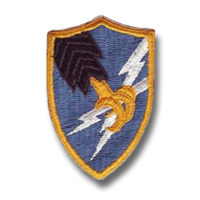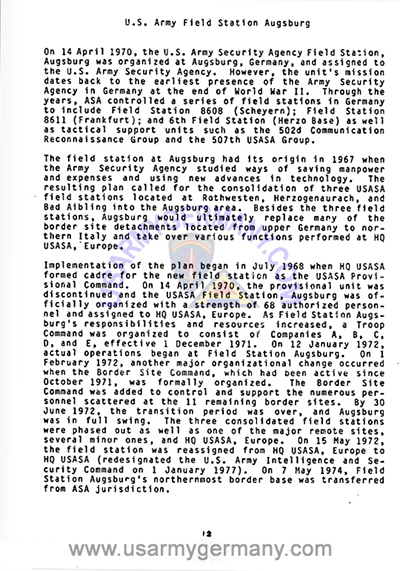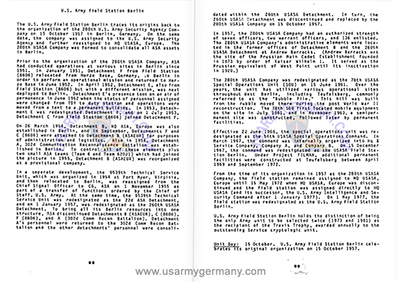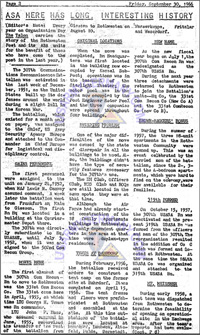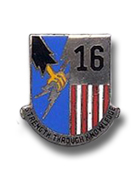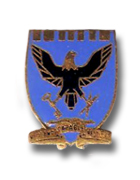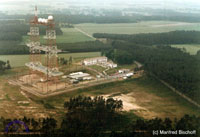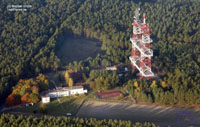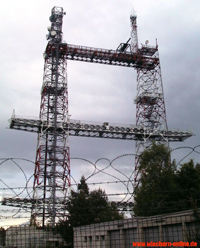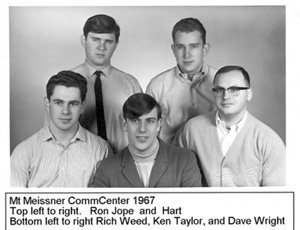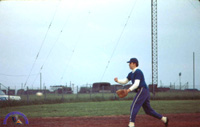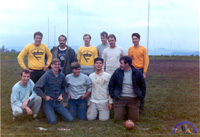| If you do NOT see the Table of Contents frame to the left of this page, then Click here to open 'USArmyGermany' frameset |
|||||||||
|
Army
Security Agency, Europe |
|||||||||
|
|
|||||||||
|
|||||||||
|
|
|||||||||
| Field Stations | |||||||||
| 18th Field Station, Bad Aibling | |||||||||
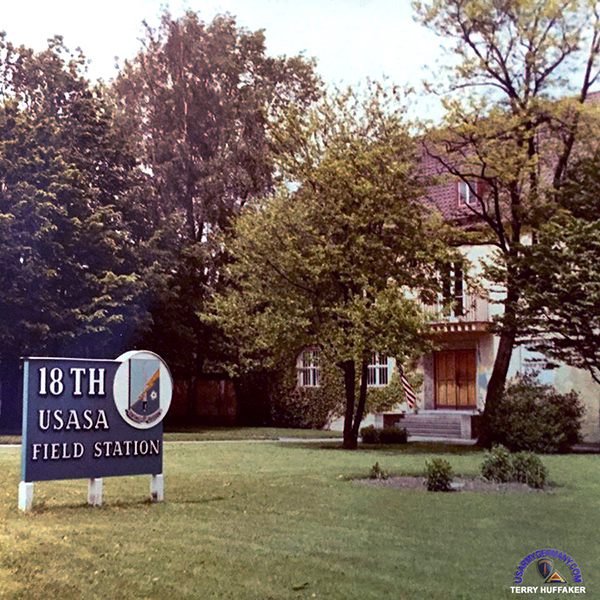 Headquarters Building, 18th USASA FS Bad Aibling, 1968 (Terry Huffaker) |
|||||||||
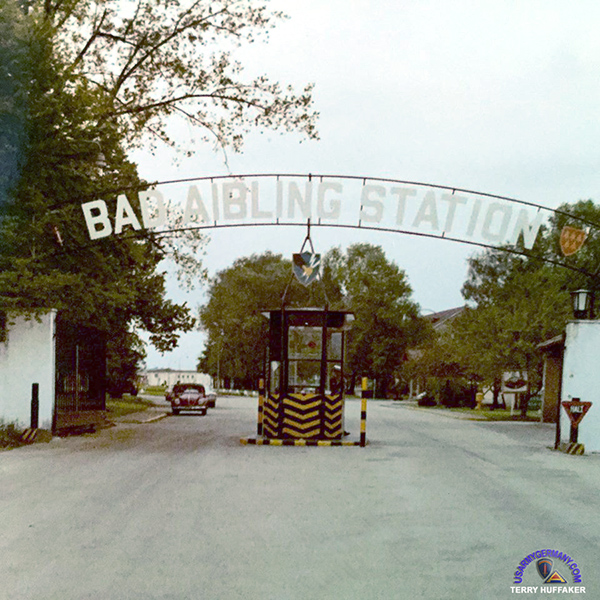 Main Gate of Bad Aibling Station, 1968 (Terry Huffaker) |
|||||||||
| 1970 | |||||||||
| (Source: Email from Thomas Nunn) | |||||||||
| I served in Germany from Jan 1970 till Mar 1972 -- as a member of the Army Security Agency. I was stationed in Berlin for about six months and then transferred to Bad Aibling Germany for the remainder of my tour. There I was assigned to "F" Branch. Our listening equipment was located inside an old WW2 German hangar -- Bad Aibling was a German fighter training base during the war. Our particular section was located in the old parts room.
On our door was a timelock -- which opened every 8 hours to allow for shift change. We monitored "Scheds", or scheduled transmissions, in 8 different languages. These scheds consisted of traffic sent in numbers, divided into groups of five. Each message could be of varying sizes. The first line of the message was always the number of the specific person the message was intended for. There could be as many as 100 recipients in one sched.
While I was stationed in Berlin, we would take a bus every day to the top of the Teufelsberg Mountain. This "mountain" was built after the war with the rubble left after the Allied bombings of Berlin.
We sat at listening positions, or "Pozes". Each of these pozes consisted of 32 individual reel-to-reel tape recorders, one 32 channel microwave decoder, a small metal desk -- on which sat a 32 switch toggle-switch box with 32 lights just above the switches, which was connected to the tape recorders. There was also a typewriter which was fed with 8-ply NCR paper sheets.
Each time that a tape recorder came on, the corresponding light on the box would light up. I forgot to mention that the operator of the poz wore headphones. We would then toggle the switch below the light and listen to what was being said. If it sounded important, we would continue to monitor the conversation; if not, we would turn the recorder off, mark and date the paper, and wait for the next one.
We also had sections listening to the other Iron Curtain countries and one listening to a "mysterious" signal coming from "outer space". We even had a section listening to the Soviet space missions.
ADDITIONAL INFORMATION: I got to Berlin in January, 1970. The intelligence community was still smarting from the Russian invasion of Czechoslovakia. Why? Because the Soviet army had moved an entire tank division from about 10 mile south of Berlin to the Czech border without breaking radio silence. In other words, the NATO people lost track of them -- an entire division. You know that our armed forces couldn't do that in 1970.
The first inkling the West got that there was a problem was the Czech border guards asking their government for permission to fire on the Soviet tank columns, permission which was quickly denied.
Well, late in 1970 the same type situation developed with Romania. Now, ya'll never heard about this one. See, the Russians liked to conduct massive field maneuvers twice a year. We always loved those times because we got super busy identifying units and putting together an order of battle. When they Ruskies went out, they required the other Warsaw Pact countries to send units as well. Most of the time, the "puppet" countries went along.
This time, however, the Romanians told the Russians to shove it. They were in the midst of harvest, and flatly refused to play. Which pissed the Russians off a bunch. So, the Ruskies sent a division to slap some sense into the Romanian government, and once again we didn't know anything about it. Until we heard the Romanian border guards requesting permission to open fire -- which the Romanian government quickly granted. However, the Russians blinked and cooler heads intervened. Crisis averted -- sort of. See, NATO told the Romanians that if they got into a shooting arguement with Russian we would step in and help them. The actual end result was the overthrow of the Romanian government and their replacement with Russian approved tyrants. We were truly only hours from war in Europe -- our butts were puckered, let me tell you.
|
|||||||||
| Field Station Augsburg | |||||||||
(Source: Excerpt from the Special Historical Series pub, "INSCOM And Its Heritage," published in 1985) |
|||||||||
| 1982 | |||||||||
| (Source: AUGSBURG SCENE, February 4, 1982) | |||||||||
| Field Station celebrates tenth anniversary by Colonel Michael Schneider) The 12th of January 1982 marked the official 10th Anniversary of US Army Field Station Augsburg. As you will see by the short history that follows, several different dates could possibly have been chosen as the official birthday, but 12 January has been formally recognized and serves as good a day to commemorate as any. Ten years is not a very long life when measured in terms of humans or other military organizations and one could observe that in that sense, the Field Station is almost an adolescent. But the twenty-four-hour-a-day, seven-day-a-week pace we have maintained since our birth ten years ago makes that decade the equivalent of 30 to 40 years activity at a more traditional pace. So in that sense, Field Station Augsburg is, at its 10th birthday, a mature, productive activity at the peak of its useful life. I thought that in recognition of this 10th Anniversary, a review of the Field Station's Birth and organizational history would be interesting. The concept of Field Station Augsburg (FSA) began in January 1967, with a study organized by the CG, US Army Security Agency (ASA). This study considered consolidation of several existing ASA stations. The goal of this study effort was to save on manpower and expenses and to exploit new technology on a large scale. After the study's acceptance at national level, the Augsburg location was chosen, in part for technical reasons and in part because of existing troop support facilities. The first cadre for the station was formed by HQ, USASA Europe as the USASA Provisional Command in July 1968, and was tasked to supervise preparations. The unit name USASA Field Station Augsburg (still provisional) became official on 14 April 1970, when a DA General Order authorized the new unit. At that time FSA had 68 personnel. It would absorb or replace three smaller Field Stations (Rothwestern, Herzogenaurach, Bad Aibling); five company sized border sites (Gross Gusborn, Wobeck, Mt. Meissner, Mt. Schneeberg, Eckstein); seven small detachments, from near Denmark to northern Italy; and HQ, USASA Europe at Frankfurt. One small Air Force field station was also relocated (from Darmstadt) to share the new facilities, along with a small Navy detachment. Formal activation of FSA took place on 12 January 1972. FSA's original structure consisted of an Operations Center to run the mission, the station staff concerned with support functions, and a Troop Command with six billeting companies and a transient detachment. In October 1971, however, Border Site Command was added to control and support the 500-plus personnel scattered at eleven remaining remote sites. The staff included a company sized Signal Office, 200-plus maintenance and supply personnel within S-4, and the separate Data Processing Division. By June of 1972, FSA was in full swing and the three supplanted stations, one large border site, three smaller sites, and HQ, USASA Europe had been closed. In September 1972, the new 1000-man Gablingen Dining Facility opened. Two more of Border Site Command's smaller detachments were closed in December 1972. Company E at Gablingen and Headquarters and Headquarters Company at Flak Kaserne moved in early 1973, bringing Troop Command all together on Sheridan Kaserne, while HQ, FSA and HQ, Border Command remained at Flak. The number of women serving at FSA was increasing dramatically at this time, and in January 1973, Company D was redesignated as a WAC company. A two-year project to transfer FSA's most northern border base (Gross Gusborn) to the British was completed on 7 May 1974. Two months previously another minor site had been closed. This left Border Site Command with three major sites and only three detachments (one at Schleswig and two at Bad Aibling). The long, friendly relationship with Communications Activity South of the Bundeswehr (CASB) began with the collocation of the first small German element in the summer of 1974. That summer also marked the beginning of construction of the Headquarters Annex at Gablingen Kaserne. In September 1974, after a year of planning, FSA began the single greatest reorganization in its existence, which resulted in the basic battalion structure that we have today. The reorganization was formalized by DA on 28 April 1975. In addition to the elements we currently know, Support Battalion included a Communications Company, and Border Command became Forward Operations Battalion, with three border companies and two detachments. On 1 October 1975, HQ, FSA vacated Flak Kaserne for its new building at Gablingen. In early 1976, the La Faire Vite project, in preparation since the founding of the Field Station, was activated. Its two small border sites replaced the three company sites of Forward Operations Battalion. This battalion was deactivated in April of that year and its two remaining detachments were transferred to 3rd Operations Battalion. 1st Operations Battalion was assigned control of the La Faire Vite operations. As a consequence of the formation of Intelligence and Security Command (INSCOM) in October 1976, US Army Security Agency Field Station Augsburg was redesignated US Army Field Station Augsburg in May of 1977. On 1 October 1977, Communications Company assets were transferred to the Army Communications Command (ACC) with no change in mission, and became USACC Activity-INSCOM, Augsburg. The company was assigned to the 5th Signal Command but was OPCON to FSA. Also, on 1 October, the local Special Security Office of new Special Security Group was formed with personnel from the FSA S-2 section, with a primary mission to support the Field Station. These were the last major changes to FSA up to the present day. We did close one detachment in 1980 and established another, and we recently added the small Document Destructor building at Gablingen, but our basic structure has been stable now for four years. There is one historic note from this year, however. It seems that on 12 January, one year ago, Thorbrau Brewery and Field Station Augsburg inaugurated the now famous "Field Station Beer" label. |
|||||||||
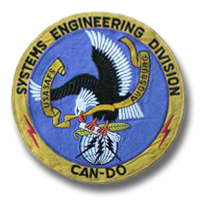 Systems Engineering Div, USASAFS Augsburg Systems Engineering Div, USASAFS Augsburg |
|||||||||
| Field Station, Berlin | |||||||||
(Source: Excerpt from the Special Historical Series pub, "INSCOM And Its Heritage," published in 1985) |
|||||||||
| 17th Field Station, Rothwesten | |||||||||
| 1963 | |||||||||
| (Source: Email from Ron Ruiz) | |||||||||
| I was an ASAer from 1963 to 1968. After many schools in the States I was stationed at the 17th USASA Field Station in Kassel (Rothwesten) for my entire Army career. I actually spent very little time at the FS as I was part of a "flyaway team" that manned or filled in for other ASAers at remote duty stations. I was at Luebeck until the station closed and also spent a lot of time at the Gartow site or Fort Gartow as we called it. I had permanent living quarters with a farm family in Pevestorf (near Det L Site). I even married a girl from Gartow and stayed in Germany when I was separated from the Army. My daughter was born in Dannenberg (near Gartow). I belong to a group of ex ASA Luebeck guys and that website can be found at www.lubeckers.com. There are approximately 300 members in that group. They hold an annual reunion somewhere in the US and an occasional reunion in Luebeck, Germany (next one is in 2009). The website contains a lot of information and photos. Other than the Luebeck and Gartow sites I was also stationed at Mt. Meisner and Helmstedt for short periods of time. I have numerous photos of the 17th FS, the Gartow site, the Luebeck site, and the Mt. Meisner site. I need to scan the photos and if you are interested I can forward them to you for your use. |
|||||||||
| (Source: THE TALON, 17th FS newsletter) | |||||||||
|
|||||||||
|
|||||||||
| Outstations | |||||||||
| (Source: Email from Jerry Mangas, Hof Reunion website) | |||||||||
| Walter... you are missing at least two ASA sites (and possibly more if I can remember the locations) on your listing. I TDY'd from Hof/Saale and the 6915th Security Group to several Army sites including the I.G. Farben Building, Rothwesten and on up to the ASA border sites in the later 1960's. Even though I wore AF Blue I was doing mostly Army Green work, so I got to travel a bit. Gartow was one site, up in the Brit zone where the Elbe River hit the West German border and swung north. That was a mobile site and the guys lived nearby in a quite comfortable Gasthaus. There was another mobile site south of that one, hard on the border but buried back in the woods, I think near Fulda. Mt Meissner? Those guys also lived in a Gasthaus, but this one was just a couple of hundred meters back from the fence. There was a third, in the Harz mountains area but I have forgotten the name. Wasserkuppe comes to mind. BTW, the Brits did NOT believe in a 5K zone, or any kind of zone, for that matter! Quite a change from life in Hof/Saale and the ever present 5K zone! There was also a big ASA field station on Teufelsberg (the monster post-WW II rubble pile) in Berlin that I spent a couple days working at while TDY at the 6912th on Templehof in Berlin. I don't think I have seen that one mentioned or haven't found it. Keep up the incredible work! |
|||||||||
| Gross Gusborn | |||||||||
| 1972 - 1974 | |||||||||
| (Source: Aerial photo - Email from Michael Grube, LostPlaces.de, Germany; information - webmaster) | |||||||||
|
|||||||||
| (1) To view large format of the Torii Tower thumbnail, go to the URL: http://www.sender-fotos.de/; then click on the Niedersachsen button on the left; scroll down to the Gusborn/Klein Gusborn section and click on the thumbnail. | |||||||||
| Related Links: Torii Towers Dannenberg and Wobeck - great page on the Torii Towers at Gross Gusborn and Wobeck operated by Field Station Augsburg. Authored by Michael Grube, Germany. Birgelen Veterans Association |
|||||||||
| Bährdorf (Heidwinkel) | |||||||||
| (Source: Email from James Reed, Heidwinkel Det, "A" Co, 319th ASA Bn, 1960-62) | |||||||||
| I arrived at the 507th ASA GP from Fort Devens in the summer of 1960. Within a week or two I was "voluntered" to drive a deuce 1/2 truck on the move to Baumholder. I had never driven a truck before let alone a deuce 1/2 Army truck. Some SGT. gave me driving lessons on the hilly terrain of Heilbronn. We loaded up with safes full of classified info, a loaded M-30 carbine and headed out. I was scared to death -- a newly arrived, newly trained truck driver. Some of the villages we traveled through were so small that a right angle turn required the entire convoy to back and forth in order to make the turn on the narrow streets. At one point while backing, I checked both mirrors, looked out the back window and slowly started backing. Crunch! A small car -- Gutbrod (spelling?) -- had pulled in right behind me nearly under those two big steel bumpers at the rear of the truck. I was moving slowly, so no one was hurt. M.P.'s came and sorted it out. And I never heard another word.
2. I arrived "A" Co, 319 Bn in Heidwinkel shortly thereafter. Spent two years there. Our operations site was at Bahrdorf. This site was a essentially a voice intercept site. I was the analyst (982) and wrote the daily reports. I thought that the small Elint unit that was located within the compound was intercepting radar signals from the first SAM sites deployed by the Russians in East Germany. I note that someone else wrote from a later time that it may have been an RDF site. Maybe they are the same. I arrived late summer of 1960 and departed Aug of 1962. I was there when the Wall in Berlin went up and the border between East and West was hardened. Was also on duty when the East Germans attempted to restrict access to Berlin along the autobahns. Minor panic time at Heidwinkel. Interesting times. |
|||||||||
| Lübeck (Blankensee) | |||||||||
 The Operations Building at the Schneeberg ASA site, mid-1950s (US Army) |
|||||||||
 Maintenance van parked near Operations huts at the Lübeck Outstation (Todd Higgins) |
|||||||||
| (Source: Input from various ASA veterans stationed at Lübeck Outstation in the 1950s & early 1960s; Photos submitted by Todd Higgins) | |||||||||
| (Source: Input from various ASA veterans; Photos submitted by Todd Higgins) | |||||||||
|
|||||||||
| Mount Meissner | |||||||||
| (Source: Email from Ron Jope, Mt Meissner, 1965-69) | |||||||||
|
|||||||||
| (Source: Tom Byrd, 1968-71) | |||||||||
|
|||||||||
| Schneeberg | |||||||||
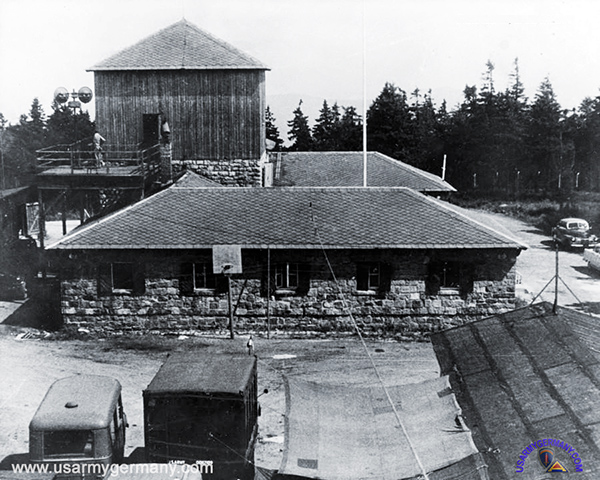 The Operations Building at the Schneeberg ASA site, mid-1950s (US Army) |
|||||||||
| (Source: Email from Jerry Mangas, Hof Reunion website) | |||||||||
| I TDY'd from Hof/Saale and the 6915th Security Group to several Army sites including the I.G. Farben Building, Rothwesten and on up to the ASA border sites in the later 1960's. Even though I wore AF Blue I was doing mostly Army Green work, so I got to travel a bit. Schneeberg was an interesting TDY. A regular Buffalo NY when it came to snow! There was a building there that housed the Luftwaffe troops (I think) and it is still there today, used as a hostel. Saw it in 2002 or 2006. |
|||||||||
| Wobeck | |||||||||
| 1958 | |||||||||
| (Source: Email from Pete Maddox) | |||||||||
| Not long ago I received 3 jpg files from Archie Brewer. These files contain 2 emails from Col. Dean Carlson the founding father of the Wobeck Detachment II 1960. Not only are they a great read but give a wonderful insight to the times before the wall and the move-up from Wasserkuppe to Wobeck |
|||||||||
| COL. DEAN CARLSON -
EVOLUTION OF THE WOBECK ASA SITE I was the CO of Det. J-2 (USM-621Y), a mobile NSA R&D team supported by ASA, on the Wasserkuppe, near Fulda, Germany, from 1958 until relocated to Wobeck, in the Elm Forest near Schoeningen & Helmstedt on 1 Jan 1960. During the period 1959-60 I was a member of several site survey teams evaluating where best to relocate this detachment; as a result, the elevation at Wobeck was determined to be best for our purposes. We made a road march from the Wasserkuppe to Wobeck, providing our own security and recovery vehicles. It was forunate that we had our own wrecker, as several of the "mobile" vehicles had not been moved for many months while on the Wasserkuppe; consequently seals, hoses, and belts that appeared ok turned out not to be when subjected to the rigors of the road march. We moved, literally, to a set of coordinates in the woods. We had to do our own site preparation & soil stabilization. It was very fortunate that I was originally commissioned Corps of Engineers to understand what had to be done under these circumstances. We erected a concertina wire enclosure, dug holes in the ground & used the dirt for revements to protect our ammunition, surveyed & constructed the anchor points for two AB-216 towers, one over 200 feet (high), the other over 300 feet, which we erected ourselves - without the assistance of the antenna team from Frankfurt. We mounted all of our special antennas & radomes, ran cables & power lines, stabilized the XM-292, H-1, and other trucks, including our radio & TTY commo vans without outside assistance. We were up and running, operationally, within a week of departing the Wasserkuppe - no small feat! |
|||||||||
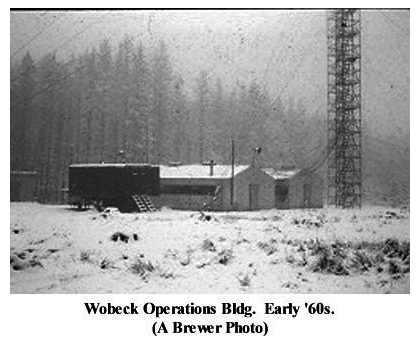 |
|||||||||
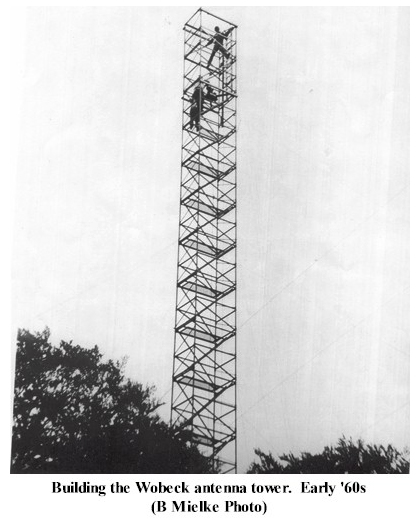 |
|||||||||
Again, it was fortunate that I was the CO, because I was & am a fluent German linguist. I had to make arrangements with the mayors & families in surrounding villages to billet the troops & with a local Gasthaus - we tried several until the troops were happy - to feed them within their subsistence allowance. Initially I was the only officer, so I was able to billet myself in the Hotel Klabautermann in Bad Helmstedt, where some other ASAers had stayed over the years. We had an RCA tech rep (Dick Cassell) to assist us from the beginning, but later he was replaced by a maintenance warrant officer. Towards the end of my tour of duty, in 1962, an ASA 1Lt was sent to be my XO. Notable among these commanders were: COLs Bryan Gruver & Raymond Hawtin. COL Bob Fechtman& CW Mel Jackson, USAREUR IG, were of immense help. Key team personnel during my tenure were: 1LT Ed Groff; Ops Sgts Nick Kaps & Dave Bishop; Elec Maint Sgts Larry Christner & Emanuel Hilt; Veh & Generator Maint Sgt Robert Charlton. NSA R&D types: Bob Hermann, Tom Blow, Charlie Gandy & Jerry Manning. Hermann Conrad, USASAEUR S-1, saved the day many times with personnel assignments. Re: Hotel Klabautermann. Hotel Klabautermann (means hobgoblin (aboard ship)), which was in Bad Helmstedt, about 200 meters from the East German border. The hotel was owned by "Mutti" Prost (a fitting name for a German tavern keeper) & her husband "Maenne." Many ASAers on TDY stayed there over the years & officers from Bährdorf, Grasleben, Heidwinkel & Schöningen used it as their residence. Before the Berlin Wall went up & the border was sealed, the East German border guards would occasionally drop in for a beer & Western cigarettes. Mutti would make them leave their AK-47s & helmets outside the door before she would serve them. I was present in civlian clothes on one occasion, so I know this to be true & not just scuttlebutt. It was probably a Saturday afternoon, as there would have been many woods walkers & tourists on a Sunday & the guards would not have come over. When tensions increased prior to erection of the Wall, we were ordered to vacate. This is when I moved to an apartment behind the Schöninger Hof. This was closer to the Wobeck site & OK except on Mondays, when pigs were butchered at first light in the courtyard beneath my windows. Re: Situation due to increased East/West tensions. The Wobeck site was probed twice by unknown persons trying to get through the concertina wire - once shortly after we set up shop (which could have been an animal) and again about a week later before the border was sealed. This was probably an actual attempt at incursion, as the BND site just down the road from us was also probed that night, but the British Signals outfit on the way to Koenigslutter was not - probably because they had so many more troops (on site) and a regular fence with securtiy lights. We were put on full alert with live ammo issued when COL Glover S. Johns, of WWII and 14th ACR fame, led the military column from Helmstedt to Berlin to assert the Allied continued access by land of that outpost city. Fortunately neither the Sovs nor the Volksarmee attempted to stop the column. Re: Problems. On Thanksgiving Day 1961 one of the security guards being possessed of neither a military driver's license nor authority to do so, took it upon himself to back the guard relief 2½ -ton truck, without using a rear guide, from the front gate to the refueling point. Unfortunately, he never made it for he backed into a guy point for one of the AB-216 towers, causing it to fall & entangle the guy wires of the other tower, rendering it unsafe to climb. I was at the British NAAFI Club on the Helmstedt Autobahn having dinner with the CO of the Helmstedt MP Det & some other officers when I received a telephone call telling me that the towers were down. Thinking this to be a joke, I went outside & from the elevation of the NAAFI, I could see our area of Elmforst quite clearly - the towers were no longer peeking above the foliage. Needless to say, the ensuing hours were quite hectic. This time we had to use the antenna team from Frankfurt, as well as a heavy duty commercial crane to salvage what we could and erect new towers. We were out of business about a week, causing no end of technical & administrative difficulties. The report of survey was most interesting! When we finally switched over and shut down the generators, the silence was blissful & it wasn't long before wild bore & deer could be seen on the game trails around the site. Then it became necessary to set up loudspeakers to play music to mask any inadvertent excape of classified sounds from the woods wanderers. Now we could begin to think about semi-permanent buildings to get our gear out of the vans (XM-292s, M-109s & 1 H-1, an Air Force type). |
|||||||||
| 1965? - 1976 | |||||||||
| Official designation: Det K, 319th ASA Bn; later (mid-1966?) Det K, 17th USASA Fld Sta or Wobeck Detachment Site Opened: 1965? Site was constructed as a replacement for the Bahrdorf site. Personnel arrived from the closed site at Bahrdorf sometime in 1965? Torii Tower: constructed around 1969; height - 79 meters. Det Closed: (Feb or March) 1976 Site was under the Border Site Command in Augsburg. (Later reopened as a detachment of the 326th ASA Co (FWD).) |
|||||||||
| 1972 | |||||||||
| (Source: Email from Terry Dan Grissom, Det K, Wobeck, 1972-75) | |||||||||
| I served in the USASA at Wobeck Det K, Schoeningen, BRD, from 1972 to 1975 in the Com Center, Rank SP-5, MOS 32G20. Fixed Crypto with TDY to Mt. Meissner, Gross Gusborn, and Schelswig at various times. We ALL lived on the economy. The nearest PX was sort of in Helmstead about 30 km away. The other installations were hundreds of km away along the Border. Our mail came through Berlin, our medical records were with the British Military in Braunswig (Braunschweig). Our finance records were in Bremerhaven, and our Personnel Records were in Augsburg. We worked rotating shifts, Tricks, 8 hours at a Shift 24 hours a day, every day. The Torii Tower was there when I arrived from FS Augsburg after going to NSA School in Frankfurt in 1972. The installation was in the middle of the forest "Elm Forest". The closest military installation was the British in Langeleben. When we really wanted to go to the PX we went to Bremerhaven about a 5-hour drive North. Augsburg was about a 8-hour drive along the Autobahn depending on how fast you were driving, it could be made in about 3-hours but then you were going about 130 mph most of the way. We all had individual transportation there were no buses. ASA Lives! |
|||||||||

